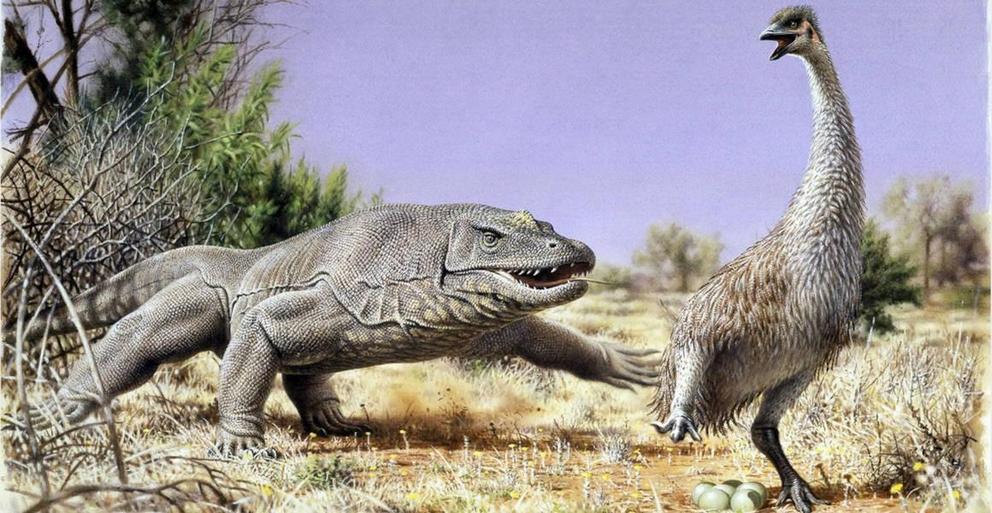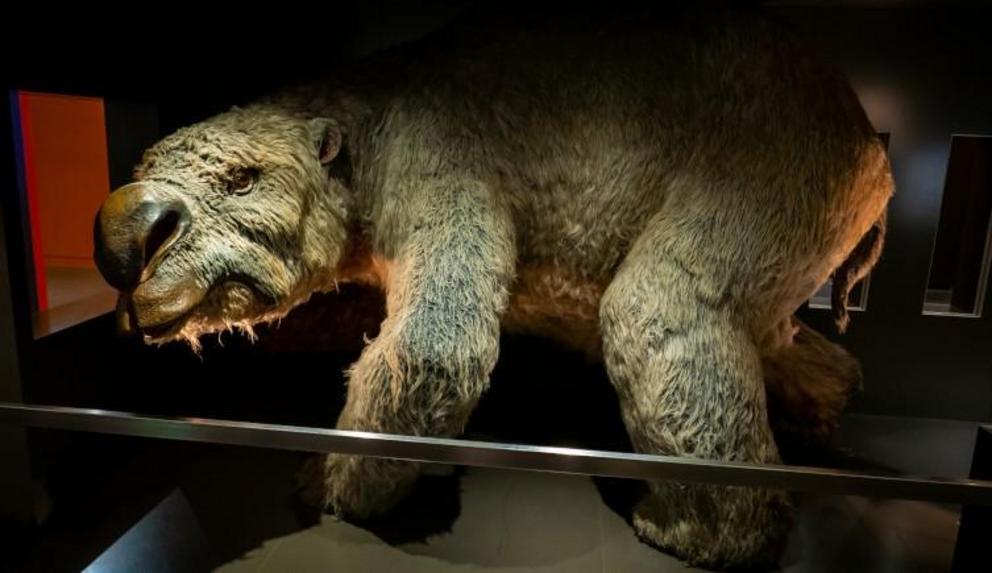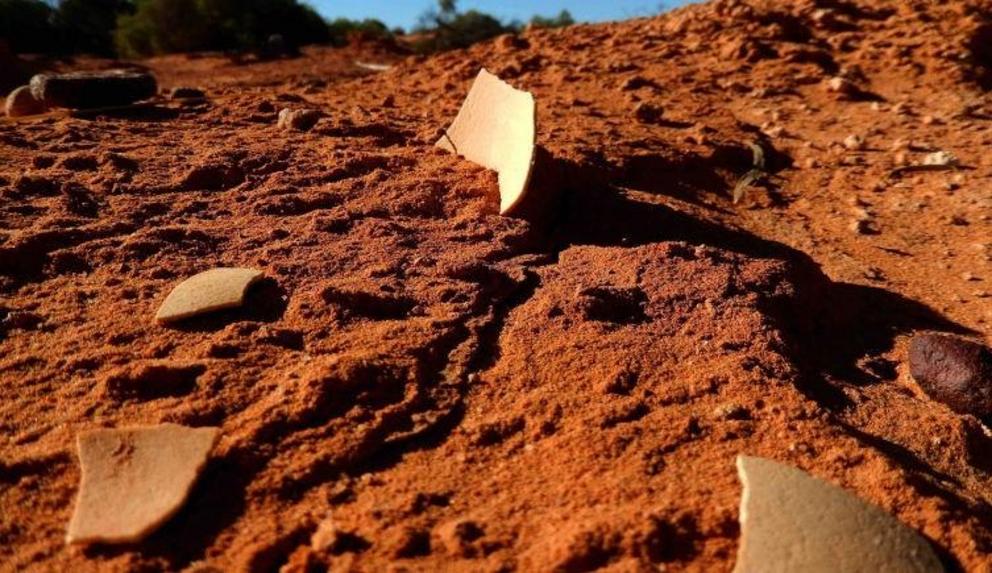The first people in Australia likely feasted on the eggs of giant ducks
Standing over two metres tall and weighing as much as 240 kilogrammes, Genyornis newtoni was one of the largest ever birds.

Genyornis was one of Australia's prehistoric megafauna, alongside lizards such as Megalania. Image © Peter Trusler
A new study reveals that humans arriving in what is now Australia likely ate it to extinction by stealing its eggs.
The mystery of what some of the first Australians may have been eating for breakfast has been solved.
Thousands of eggshell fragments dating back to the Pleistocene have been found across Australia, with evidence that they had been cooked. While some of these eggshells have been attributed to emus, the identity of others which suddenly vanish from the fossil record around 50,000 years ago has been the subject of heated debate.
An international team of scientists have now confirmed the identity of the mystery egg-layer as Genyornis newtoni, an extinct flightless bird which measured over two metres tall.
Co-author Prof Gifford Miller says that their findings suggests that the extinction of G. newtoni may have been caused by unsustainable egg collecting, an issue that still affects birds today.
'There is no evidence of Genyornis butchery in the archaeological record,' Gifford says. 'However, eggshell fragments with unique burn patterns consistent with human activity have been found at different places across the continent.
'This implies that the first humans did not necessarily hunt these enormous birds, but did routinely raid nests and steal their giant eggs for food. Overexploitation of the eggs by humans may well have contributed to Genyornis extinction.'
The findings of the study were published in Proceedings of the National Academy of Sciences.

Diprotodon is the largest marsupial that ever lived, but was wiped out alongside many other Australian animals during the Pleistocene. Image © C.K. Koay, licensed under CC BY-NC 2.0 via Flickr
What caused the extinction of Australia's megafauna?
During the Pleistocene, between around 2.6 million to 12,000 years ago, a series of ice ages caused the sea levels to rise and fall. At various times this created land bridges connecting Australia to New Guinea and the Aru Islands Regency in the north and Tasmania in the south, which all together formed a landmass known as Sahul.
Aside from changes in the climate, the Pleistocene is also known for the disappearance of large animals, known as megafauna. Over the past 60,000 years animals such as the woolly mammoths of Europe and the giant ground sloths of the Americas were amongst a whole menagerie of giant creatures which vanished.
The changing climate is believed to have played a role in the extinction of megafauna, but that is not the full story.
When humans arrived in Australia at least 65,000 years ago, there would have been many large animals roaming the continent. These included a giant kangaroo known as Procoptodon, a lion-like marsupial called Thylacoleo, and the giant wombat-like Diprotodon.
However, within the next 20,000 years or so most of these species would go extinct. Today, Australia is home to no native animal larger than 40 kilogrammes.
The influence of humans, be it through hunting the animals directly or burning their habitats, is believed to have contributed to the rapid extinction of some of these giants. The disappearance of these animals occurred so quickly that little evidence of humans interacting with these megafauna remains in the fossil record today.
But there is an exception. Excavations across Australia have revealed thousands of eggshell fragments dating back over 55,000 years. Eggs weighing around 1.5 kilogrammes have been found, but identifying the bird that laid them had been something of a challenge.
While G. newtoni has always been considered as a strong candidate, some scientists have argued that the shape and thickness of the shell matched better with the extinct giant malleefowl Progura.
After years of arguments from both sides, the debate has now been brought to a close.

Genyornis eggshell is found across a large area of Australia, and is regularly uncovered by wind as it erodes sand dunes. Image © Gifford H. Miller
How did Genyornis newtoni become extinct?
Initially, scientists had hoped to extract ancient DNA from the eggshell to identify the species. However, the warm Australian climate means that genetic material is quickly broken down and so the researchers turned to another key component of eggs, their proteins.
Ancient proteins were extracted from three eggshell fragments, and then compared to similar proteins from living birds. The researchers found the closest match in living ducks and geese and was more likely to be from G. newtoni than Progura.
Lead author Prof Beatrice Demarchi says, 'Progura was related to today's megapodes, a group of birds which also contains ground-feeders such as chickens and turkeys.
'We found that the bird responsible for the mystery eggs emerged prior to the galliform lineage, enabling us to rule out the Progura hypothesis. This supports the implication that the eggs eaten by early Australians were laid by Genyornis.'
The researchers suggest that the first humans to arrive in Sahul were already used to eating the eggs of large birds, with ostrich eggshell dating to the Pleistocene having been found at sites across Africa and Asia. There is also more recent evidence that humans cooked and ate the eggs of another native Australian bird, the cassowary.
But unlike these species, G. newtoni may have been unable to survive the rate at which its eggs were being taken. It is believed that the birds were gradually driven to increasingly isolated parts of Sahul before becoming extinct around 47,000 years ago.
